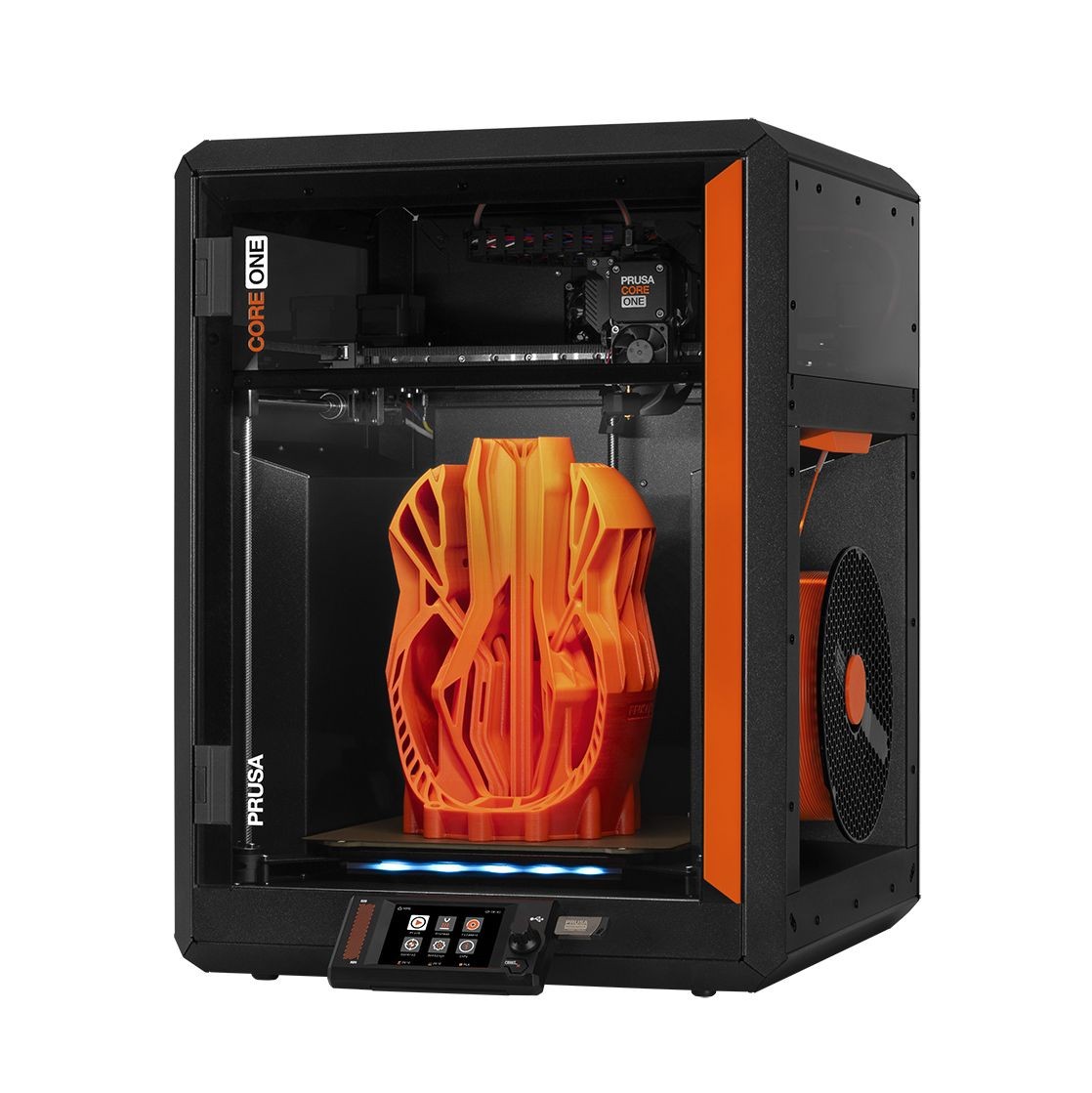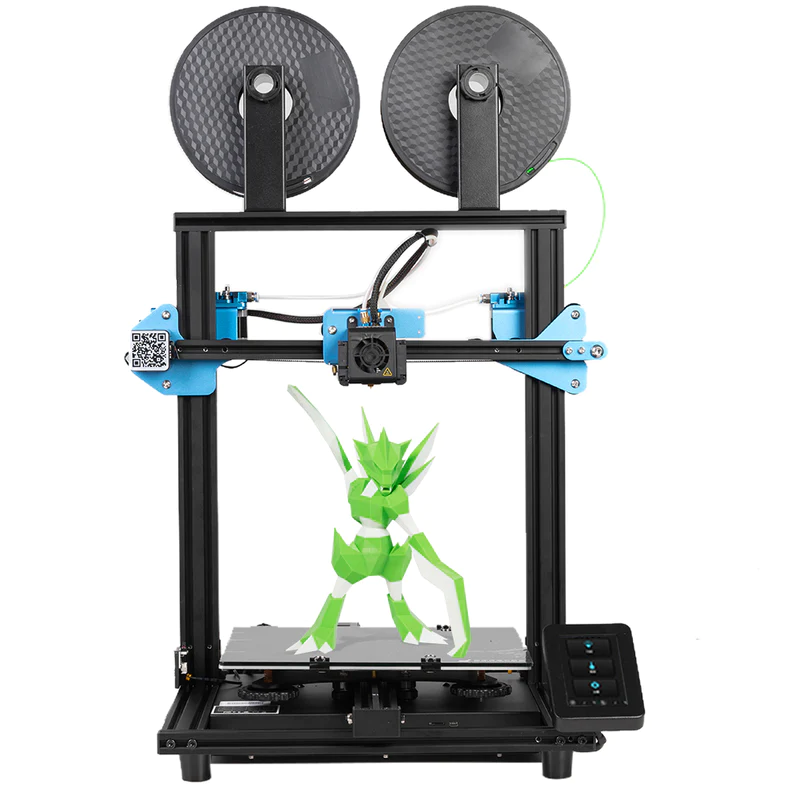Compare Core One vs SV02
Comparison between the best 3D printers
Choose the best 3D printer at the best price. The cheapest 3D printers are here.
Buy a 3D printer here with 3D Fila.
 |
 |
|
| Model | Core One |
SV02 |
| Printing Material | Filament | Filament |
| Buy Filament for Prusa Core One | Buy Filament forSovol SV02 | |
| Estimated price | $1200,00 | $209,00 |
| Manufacturer | Prusa | Sovol |
| Release Year | 2025 | 2020 |
| Print Volume [mm] | 250x220x270 | 280x240x300 |
| Printer Size [mm] | 385x340x620 | 539x493x710 |
| Weight [kg] | 14 | 11,86 |
| Power Loss Recovery | YES | YES |
| Enclosed printer | YES | NO |
| Bed Leveling | Automatic | Manual |
| Filament End Sensor | YES | NO |
| Bed type | Heated | Heated |
| Power supply system | Direct Drive | Bowden |
| Standard nozzle | 0,4 | 0,4 |
| Maximum Nozzle Temperature [°C] | 300 | 260 |
| Maximum Bed Temperature [°C] | 120 | 110 |
| Maximum printing speed [mm/s] | 500 | 120 |
| Filament holder | YES | YES |
| Camera for supervision | NO | NO |
| Recommended filaments | PLA, TPU, TPE, HIPS, ABS, PETG, WOOD, PC, PA, PVA, ASA | PLA, PETG, Tritan, Flex, ABS |
| Recommended slicers | Cura, Prusa Slicer, Orca | Cura, Simplify, Slic3r, IdeaMaker |
| Maximum Resolution [mm] | 0,01 | 0,1 |
| Processor | xBuddy 32 bit | |
| Display | Touchscreen 3,5'' | Display touchscreen 4,3'' |
| Power Supply | 240 W | |
| Connectivity | SD | SD / USB |
| Operating systems | Windows, Linux e Macbook | Windows, Mac, Linux |
| Date of registration in the system | 2024-11-27 | 2022-11-10 |
| Release date | 2025 | 2020 |
| Extra features | The Prusa Core One is a CoreXY 3D printer featuring a robust steel frame, a 3.5" touchscreen, and a heated chamber for technical filaments. It offers 360° cooling for improved print quality and supports upgrades from the MK4S model. With a compact design, a print volume of 270x250x220 mm, and compatibility with the MMU3 for multi-color printing, it stands out for its ease of maintenance, precision, and speeds up to 260% faster than the MK3S+. | The Sovol SV02 is a dual extrusion 3D printer with two inputs and one output hotend, silent motherboard and 4.3" color touchscreen. It includes a tempered glass platform for glue-free adhesion, dual Z-axis for more stability, and fast heating with Mean Well power supply. It has a resume printing function and support for upgrades, such as an automatic leveling sensor. |
| Support for multiple colors and materials (AMS and CFS) | YES | NO |
Notes * |
||
| Cost-benefit | 7 / 10 | 7 / 10 |
| Hardware | 6 / 10 | 1.5 / 10 |
| Tela | . | . |
| Print volume | 3 / 10 | 4 / 10 |
| Performance | 4 / 10 | 1 / 10 |
Conclusion |
| In comparing the Core One and the Sovol SV02 3D printers, several key factors stand out that can help potential buyers make an informed decision. The Core One, from Prusa, is positioned as a high-performance model, with a robust design and features geared towards precision and advanced printing capabilities. Its larger print volume, faster maximum printing speed, and higher temperature ratings for both the nozzle and bed enable it to handle a wider variety of filaments, including technical materials. Additionally, its automatic bed leveling and filament end sensor provide ease of use and reliability, making it ideal for users seeking a professional-grade 3D printing experience. On the other hand, the Sovol SV02 is a more budget-friendly option that still offers solid performance with dual extrusion capabilities. While it may lack some of the advanced features of the Core One, such as automatic bed leveling and a fully enclosed build, the SV02 does appeal to hobbyists looking for versatility and decent print quality without a large investment. Its print volume is slightly larger, which could be advantageous for specific projects, and its support for various materials still makes it a capable option for many users. Ultimately, the decision comes down to the buyer's specific needs and budget. For those prioritizing advanced features, build quality, and extensive material support, the Core One is a compelling choice. Conversely, the Sovol SV02 serves as an excellent entry point for those looking to explore 3D printing without a significant financial commitment. Both models provide a good cost-benefit ratio in their own right, appealing to different segments of the 3D printing community. |

